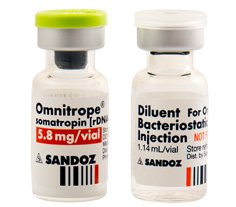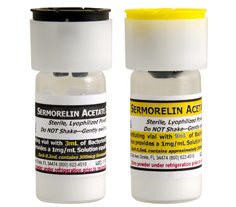Testosterone Levels in Men and Women by Age

Testosterone levels are much higher in men than they are in women and can lead to problems if they get too high or too low at any point in time. In this review, we look at the function of testosterone, how to check testosterone levels, what happens if they are too high or too low, their impact on men and women, and how to treat testosterone deficiency (Low T).
Maintaining average testosterone levels in the normal range is crucial at every age. During puberty, testosterone helps boys develop into men. In adulthood, testosterone is vital for spermatogenesis – the process of sperm cell maturation. It is equally as important a hormone for female fertility, as it helps with follicular growth and sensitivity.
Later in life, testosterone is crucial for preserving bone density and muscle mass. As the stimulator of erythropoiesis, testosterone ensures that the body continues to produce a healthy supply of red blood cells. Testosterone also supports brain functions, emotional well-being, metabolism, insulin sensitivity, sleep, hair growth, and sex drive – all actions that are crucial to maintaining a positive quality of life.
As with other hormones, the answer to how to check testosterone levels lies in blood analysis. Doctors who specialize in hormone replacement therapy run more than just a single blood test for testosterone levels. They also measure other hormones that can impact testosterone production, as well as those that can produce the same symptoms when in decline. It is crucial to determine the precise cause of any symptoms, as that is how to target the appropriate treatment.
Testosterone levels are naturally higher in men than in women, but it is crucial for every adult to maintain a healthy supply of testosterone at every age.
What Is Testosterone and Why Does It Decline?
Testosterone is an androgen hormone produced by the testes in men and the ovaries in women. The adrenal glands also provide a small amount of testosterone. The body produces testosterone through a series of chemical conversions that begin with cholesterol. That is why dietary cholesterol is necessary to support androgen hormone production.
Normal testosterone levels rely on cholesterol, which then becomes pregnenolone, before turning into hormones such as progesterone, DHEA, and androstenedione – the precursors to testosterone – through one of two pathways as depicted in the images below:
What affects testosterone levels and causes them to decline?
Many factors can influence testosterone production and can vary from male to female. Causes of testosterone deficiency can include any of the following:
- Conditions at birth:
- Noonan syndrome
- Klinefelter syndrome (males)
- Kallmann syndrome
- Underdeveloped sex organs (congenital defect)
- Conditions later in life:
- Tumor of the hypothalamus, pituitary gland, testes, ovaries
- Surgery or radiation to treat the tumors mentioned
- Injury to the head or testes
- Pituitary disease
- Certain types of autoimmune diseases
- Infection in the testes
- Cancer chemotherapy
- Sarcoidosis
- HIV/AIDS
- Cirrhosis of the liver
- Kidney failure
- Certain illnesses and medications
- Hemochromatosis (excess iron levels)
- Alcohol or substance abuse
- Steroid use
- Obesity
- High prolactin levels
- Type 2 diabetes (uncontrolled)
- Elevated estrogen levels
- Obstructive sleep apnea
- Exposure to environmental or chemical estrogens (phytoestrogens, phthalates, xenoestrogens)
- Aging
- Menopause
- Oophorectomy (surgical removal of the ovaries)
Although aging is one reason why testosterone levels decline, the doctor will likely ask questions to rule out other causes.
Low Testosterone Levels
Men and women who have low testosterone levels may suffer from a wide range of symptoms. Many people do not connect these changes until they discuss them with a physician. It is natural to assume that one’s sex drive may decline with age, along with energy levels and the hours of sleep. When you add weight gain, muscle and bone loss, and high cholesterol and blood pressure levels, the lines begin to intersect and lead to the suspicion of hormonal imbalance and testosterone deficiency.
There are many names for low levels of testosterone in males, including hypogonadism, testosterone deficiency, androgen deficiency, and Low T. Men who experience Low T may lose interest in the activities they once enjoyed, fret over the disappearance of their morning erections, and worry about poor erectile functions. For younger males, infertility can be a source of concern with low testosterone levels.
Women who have low testosterone may also suffer from infertility, as well as PMS issues and signs of menopause, such as hot flashes and night sweats. Men are not immune to these issues and may also develop night sweats and hot flashes. Irregular periods, vaginal dryness, and low sex drive are possible.
Because testosterone also acts on androgen receptors in the brain, lack of focus, impaired learning and cognitive processing, memory loss, depression, and mood changes may occur.
Normal Testosterone Levels
Maintaining normal levels of testosterone is crucial for every adult. A healthy diet, regular exercise, adequate sleep, weight maintenance, and stress reduction all work to promote healthy testosterone production.
Normal testosterone levels in females are significantly lower than in males. However, that also means that the slightest decline can make a difference in functions associated with testosterone.
Postmenopausal women 20 to 49 years of age can expect to have total testosterone levels fall anywhere between 8 and 55 ng/dL, depending on the lab reference range. After age 49, or postmenopausal, the range can be anywhere from 3 to 41 ng/dL.
The charts below show the average for normal total testosterone levels in men by age, accounting for all males (obese and nonobese):
| Total Testosterone Average All Men: ng/dL |
| Percentile |
Age 19 – 39 |
Age 40 – 49 |
Age 50 – 59 |
Age 60 – 69 |
Age 70 – 79 |
Age 80 – 99 |
| 2.5 |
229 |
208 |
192 |
190 |
190 |
119 |
| 10.0 |
318 |
283 |
262 |
260 |
259 |
256 |
| 25.0 |
396 |
358 |
341 |
340 |
340 |
338 |
| 50.0 |
507 |
461 |
446 |
446 |
446 |
446 |
| 75.0 |
626 |
588 |
573 |
572 |
572 |
572 |
| 97.5 |
902 |
902 |
902 |
902 |
902 |
902 |
As you can see in the chart below, nonobese men have significantly higher total testosterone levels than men who are overweight. That is also why doctors recommend losing weight to men who have low testosterone.
| Total Testosterone Average All Nonobese Men: ng/dL |
| Percentile |
Age 19 – 39 |
Age 40 – 49 |
Age 50 – 59 |
Age 60 – 69 |
Age 70 – 79 |
Age 80 – 99 |
| 2.5 |
267 |
234 |
219 |
218 |
218 |
157 |
| 10.0 |
344 |
310 |
297 |
296 |
292 |
278 |
| 25.0 |
424 |
386 |
374 |
374 |
372 |
362 |
| 50.0 |
531 |
481 |
477 |
477 |
477 |
476 |
| 75.0 |
643 |
68 |
605 |
604 |
604 |
604 |
| 97.5 |
929 |
929 |
929 |
929 |
926 |
913 |
The AUA (American Urological Association) considers anything less than 300 ng/dL total testosterone as standard for diagnosing low testosterone in men. The current LabCorp guidelines show a reference range of 264 to 916 ng/dL, which replaces the old range of 348 to 1197 ng/dL. The AUA also states that men with over 300 ng/dL may also receive a low testosterone diagnosis when accompanied by symptoms of the decline.
High Testosterone Levels
High testosterone levels are less common in men than they are in women. The most likely cause of elevated levels of testosterone is steroid use or abuse. Other causes of high testosterone are tumors in either the testes or adrenal glands.
Unfortunately, high levels of testosterone in women are more common and are often linked to a condition known as polycystic ovarian syndrome (PCOS). One of the leading causes of infertility, PCOS, most often affects women during their childbearing years. As with men, a tumor in the adrenal glands or the ovaries can also increase testosterone production to elevated levels.
Having too much testosterone can cause the following issues in men and women:
- Adult acne
- Oily skin
- Infertility
- Aggressive or risky behaviors
- Headaches
- High blood pressure
- Polycythemia (high red blood cell count)
- Liver disease
- Gynecomastia (male breast enlargement)
- Clitoral enlargement (women)
- Vocal deepening (women)
- Unusual hair growth or loss
How Common Is Low Testosterone in Men?
While all men will experience a decrease in testosterone production as they age, they will not all develop Low T. Low testosterone levels that cause problems are uncommon in younger males and are most likely linked to tumors, injuries, substance, or steroid abuse. In older men, 50% of the male population over age 80 may suffer from testosterone deficiency symptoms.
Testosterone levels in men are significantly affected by health and weight. Men who are overweight or those who have diabetes are at an increased risk of developing low testosterone.
How Common Is Low Testosterone in Women?
Until recently, many doctors did not check testosterone levels in women during menopause. The standard for treatment was estrogen and progestin therapies. However, with the inherent risks associated with some of those treatments, many women turned away from hormone replacement therapy.
Today, females are being advised to contact hormone clinics rather than their family physicians or gynecologists to seek proper hormonal testing. Low testosterone is a common occurrence during and after menopause as the ovaries no longer produce that hormone. Only a small amount is left coming from the adrenal glands and peripheral tissues.
Because the body also coverts some free testosterone into estradiol, the leading form of estrogen, menopausal women often experience a hormonal imbalance called estrogen dominance, which causes them to gain weight. That is why checking hormone levels, including testosterone, is vital for any female with menopausal or low testosterone symptoms.
Testosterone Deficiency – Is It Dangerous?
Some of the common signs of testosterone deficiency may not seem dangerous, such as:
- Forgetfulness
- Lack of motivation
- Gaining weight
- Muscle loss
- Low sex drive
- Thinning hair
- Trouble sleeping
- Decreased energy
- Reduced interest in activities and socializing
However, maintaining normal total testosterone levels is crucial because if left unchecked and untreated, testosterone deficiency can increase the risk of the following:
- Anemia
- Atherosclerosis
- Cardiovascular disease
- Dementia
- Elevated LDL and total cholesterol and triglyceride levels
- High blood pressure
- Insulin resistance
- Obesity
- Osteopenia
- Osteoporosis
- Type 2 diabetes
Checking testosterone levels is crucial for anyone who has symptoms of Low T. All it takes is a consultation with a hormone specialist, blood test, physical examination, and completing a health history questionnaire to get the answers as to why physical, emotional, and mental changes are occurring that interfere with one’s quality of life.
Untreated testosterone deficiency can be dangerous and can lead to significantly more serious health issues.
Testosterone Therapy for Low Levels
Men and women who receive a diagnosis of low testosterone levels qualify for testosterone replacement therapy (TRT). The diagnosing hormone specialist will rule out other conditions before prescribing TRT and ensure that there are no contraindications that would prohibit treatment.
How can I raise testosterone levels without medication?
In some situations, it is possible to increase testosterone production without the use of TRT. We find that lifestyle changes can help significantly before a person exhibits signs of Low T. However, by the time widespread symptoms appear, testosterone levels are often so low that it is necessary to turn to medication, at least for a short time.
The lifestyle changes that help boost testosterone production the most are:
- Getting at least 7 hours of sleep each night. While 8 is the magic number, getting 7 to 9 hours can help maximize nocturnal testosterone release and use by the body. One word of caution – too much sleep can reverse the benefits and further lower testosterone levels.
- Work out at least three times but no more than five times a week. Engaging in exercises that utilize the large muscle groups, and no more than 30 minutes of high-intensity interval cardio training at a time is ideal for boosting testosterone levels.
- If you are overweight, lose that excess fat. Even reducing only 10% of your body fat can help increase testosterone. Intermittent fasting, opting for lean protein, and avoiding sugar and fatty foods can all help you lose weight and boost testosterone.
- Stress reduction is crucial if you want to increase testosterone. The stress hormone cortisol inhibits testosterone production, so to improve testosterone, banish stress.
If you want to know how to increase testosterone levels quickly, there is no better way than with doctor-prescribed testosterone replacement therapy. The hormone specialists at Kingsberg Medical provide customized treatment for men and women battling the effects of Low T. Contact us today for a free, confidential phone consultation for more information.
Brian Leeber
 Testosterone levels are much higher in men than they are in women and can lead to problems if they get too high or too low at any point in time. In this review, we look at the function of testosterone, how to check testosterone levels, what happens if they are too high or too low, their impact on men and women, and how to treat testosterone deficiency (Low T).
Maintaining average testosterone levels in the normal range is crucial at every age. During puberty, testosterone helps boys develop into men. In adulthood, testosterone is vital for spermatogenesis – the process of sperm cell maturation. It is equally as important a hormone for female fertility, as it helps with follicular growth and sensitivity.
Later in life, testosterone is crucial for preserving bone density and muscle mass. As the stimulator of erythropoiesis, testosterone ensures that the body continues to produce a healthy supply of red blood cells. Testosterone also supports brain functions, emotional well-being, metabolism, insulin sensitivity, sleep, hair growth, and sex drive – all actions that are crucial to maintaining a positive quality of life.
As with other hormones, the answer to how to check testosterone levels lies in blood analysis. Doctors who specialize in hormone replacement therapy run more than just a single blood test for testosterone levels. They also measure other hormones that can impact testosterone production, as well as those that can produce the same symptoms when in decline. It is crucial to determine the precise cause of any symptoms, as that is how to target the appropriate treatment.
Testosterone levels are much higher in men than they are in women and can lead to problems if they get too high or too low at any point in time. In this review, we look at the function of testosterone, how to check testosterone levels, what happens if they are too high or too low, their impact on men and women, and how to treat testosterone deficiency (Low T).
Maintaining average testosterone levels in the normal range is crucial at every age. During puberty, testosterone helps boys develop into men. In adulthood, testosterone is vital for spermatogenesis – the process of sperm cell maturation. It is equally as important a hormone for female fertility, as it helps with follicular growth and sensitivity.
Later in life, testosterone is crucial for preserving bone density and muscle mass. As the stimulator of erythropoiesis, testosterone ensures that the body continues to produce a healthy supply of red blood cells. Testosterone also supports brain functions, emotional well-being, metabolism, insulin sensitivity, sleep, hair growth, and sex drive – all actions that are crucial to maintaining a positive quality of life.
As with other hormones, the answer to how to check testosterone levels lies in blood analysis. Doctors who specialize in hormone replacement therapy run more than just a single blood test for testosterone levels. They also measure other hormones that can impact testosterone production, as well as those that can produce the same symptoms when in decline. It is crucial to determine the precise cause of any symptoms, as that is how to target the appropriate treatment.




















